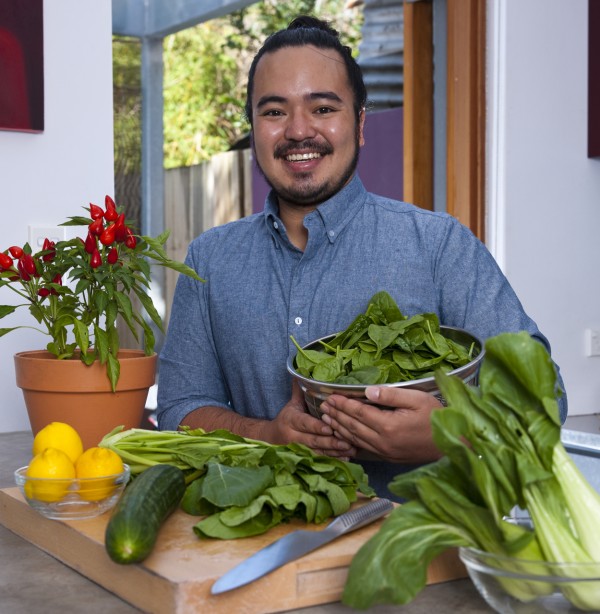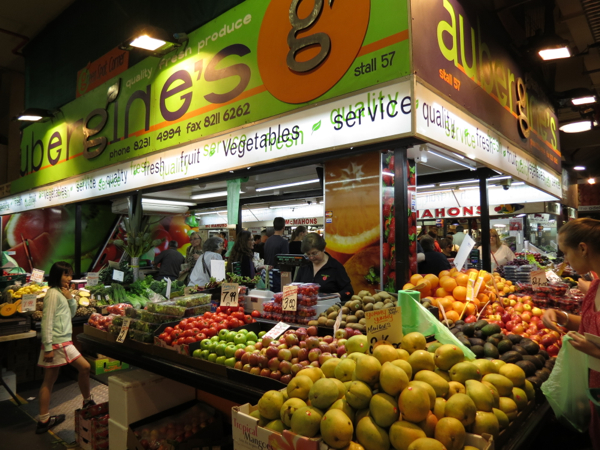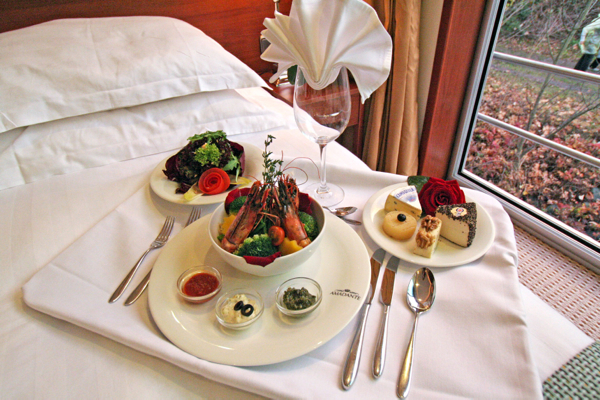Published in Vacations & Travel Autumn 2003 edition.
“A lot of people wanting to go to the Clare Valley end up at the Riverland,” lamented a tourist operator in this beautiful South Australian winemaking region.
Already overshadowed by the Barossa, it must be the ultimate blow for Clare winemakers when travellers from Adelaide whiz past the turn-off for Clare and end up somewhere around the bulk-wine producing facilities of the Riverland.
Those who do find their way are richly rewarded with delightful scenery, historic towns and superb food and wine, including some ofAustralia’s finest riesling.
The fog created an almost ethereal effect over the wooded hills as we drove to Skillogalee Wines, where hosts Dave and Diana Palmer greeted us in the pretty cottage garden of their quaint restaurant and cellar door, located in a stone cottage built nearly 150 years ago by a Cornish miner who apparently did not approve of drinking. One wonders what he would think of his property now.
When the Palmers bought the property from the George family, who had planted the vines in the early 1970s, they decided to serve some food as a sideline. The idea blossomed into a fully-fledged restaurant, open seven days a week (10am-5pm) with a choice of seating outside under the olive trees or inside the cute cottage with doors so low that visitors have to duck their heads.
A trained chef, Diana oversees the menu which uses local produce wherever possible, especially on her vine pruners’ lunch. Dishes might include specialities such as lamb from nearby Burra, linguine in a creamy riesling sauce, skewered yabbies with cucumber and coriander salad, or blissful little roulades of roasted red capsicum and Woodside goats’ curd. Picnic baskets are available by arrangement.
Last year the Palmers bought a neighbouring property with bed and breakfast accommodation in the Windermere Cottages. A stone farmhouse is being restored to provide additional accommodation.
Skillogalee produces an excellent riesling, an aromatic, spicy gewurtztraminer in theAlsacestyle,shirazand other wines from low-yielding vines.
A great way to explore the valley is by walking or cycling the Riesling Trail, which follows the old railway line betweenAuburnand Clare. The 27km route is lined with vineyards, old stone villages, historic wineries and country hotels. The line has been covered with gravel, making it easy to walk on, and bikes are available for hire at either end.
The trail starts at Mt Horrocks Wines, located in the formerAuburnrailway station and beautifully renovated by winemaker Stephanie Toole. She buys hand-picked grapes from highly respected Watervale growers and carefully crafts her wines, fermenting them in French oak. The cellar door and gardens are a showpiece, where visitors can relax over a light lunch at weekends.
Auburnis also the home of Taylors Wines, the largest of theClareValleywineries with a 500ha vineyard. Established in 1972, it is open daily.
While the valley excels at riesling, many of its reds are also worth seeking out, including those from Leasingham, which has been an integral part of the valley for more than 100 years. Its cellar door in Clare is open daily.
With a combined 30 years’ experience in the wine industry working for larger wine companies, Jane Willson admits that she and partner Steve Wiblin should have known better than to introduce another label into the marketplace.
Yet wine drinkers would have been the poorer if this enterprising duo had not decided to strike out on their own with their Neagle’s Rock label. After several years of resurrecting vineyards and buildings, they now have a cellar door and restaurant, George of Clare, serving creative food seven days and two nights a week.
Smack bang near the Riesling Trail is the chic Brice Hill Vineyard Restaurant, where I had desserts to die for: spiced quince tartlets with mascarpone infused with lavender honey, and almond meringues topped with toffee grapes and chocolate vine leaves. Paul Borland, who manages the restaurant with his wife Ally, previously worked as a chef at Peppers Mt Broughton in the NSW Southern Highlands. A downstairs wine bar features more casual meals than the fine dining upstairs.
One of the valley’s best-kept secrets is the restaurant at Eldredge Vineyard, where Amanda Waldron and Philip Scarles, who trained in classical French cuisine inLondon, serve Mediterranean-inspired lunches from Thursday to Sunday. They have established a niche for their gourmet preserves sold under the London Hill brand. They have planted an orchard that will eventually supply all their fruit and berries, buy olives and saltbush lamb locally, and raise their own free-range poultry.
One of the Clare Valley’s newest cellar doors, Kirrihill Estates, is the centrepiece for a $10 million ‘winery without walls’, with a cantilevered roof and sails to provide natural light, and a sloping site which takes advantage of gravity in the production process.
At the other end of the spectrum, Sevenhill Vineyard has a history dating back to 1851 when it was established by the Jesuits for sacramental wines. They still run it, albeit with a broader range of wines, offering tastings and sales Monday to Saturday in the old monastery cellars.
At nearby Thorn Park Country House, David Hay and Michael Speers pamper their guests with fine food and wine, warm hospitality and cooking classes. Their elegant 145-year-old stone and slate homestead has six guest rooms. Hay is a self-taught chef but has a flair with food, his training as an interior designer having given him an eye for detail.
HistoricAuburn, birthplace of Australian author and poet C J Dennis, was originally known as Tateham’s Waterhole, hence the name for Tatehams restaurant. Swiss owners Mike and Isabelle Jeandupeux have turned an underground passageway of the former general store into a fabulous cellar and their menu emphasises fresh produce in dishes such as riesling and truffle mousseline, and seasonal fruits withAuburnhoney jelly. They have four guest rooms with ensuites.
While it is grapes that have put the valley on the map, Tony and Susan Thorogood make their wine from apples. Their Thorogoods of Burra products are very sophisticated, although the manufacturing process is anything but as the wines are handcrafted in much the same way cider was made 100 years ago.
The Thorogoods arrived in the valley in 1989 and immediately fell in love with Burra. ‘We loved the old town, the countryside reminded Susan of the Yorkshire Dales where she grew up and I liked the rolling hills and fertile valleys,’ Tony said.
From their mudbrick cellar, opened in 1999, they sell fine apple wines and vintage ciders with delightful names such as Gold Dust, Misty Morning and Old Sleepy: all very appropriate when an excess of liquid gold brings on that sleepy feeling.
© Christine Salins




